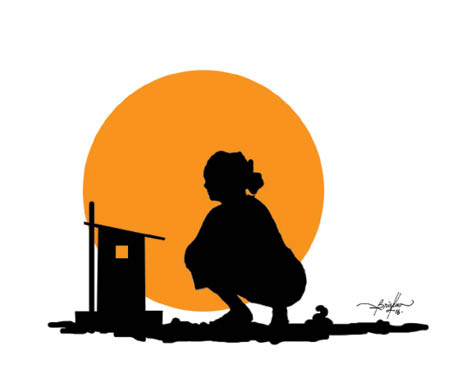Let us talk about Piles (hemorrhoids)
Compliments of the season. These days, you can hardly find a family without someone suffering from piles also known as Hemorrhoids. I am interested in knowing more about this problem and how to prevent it? Margaret V. Thanks Margaret for your question. Pile which as you rightly said is also called Hemorrhoids (HEM-uh-roids) “are swollen […]

Compliments of the season. These days, you can hardly find a family without someone suffering from piles also known as Hemorrhoids. I am interested in knowing more about this problem and how to prevent it?
Margaret V.
Thanks Margaret for your question. Pile which as you rightly said is also called Hemorrhoids (HEM-uh-roids) “are swollen veins in the anus and lower rectum. Hemorrhoids have a number of causes, although often the cause is unknown. They may result from straining during bowel movements or from the increased pressure on these veins during pregnancy.
What are the symptoms?
- Painless bleeding during bowel movements.
- Itching or irritation in the anal region.
- Pain or discomfort.
- Swelling around the anus.
- A lump near the anus, which may be sensitive or painful (may be a thrombosed hemorrhoid).
- Hemorrhoid symptoms usually depend on the location.
What are the types of piles?
- 1. Internal hemorrhoids. These lie inside the rectum. Usually can’t see or feel these hemorrhoids, and they rarely cause discomfort. But straining or irritation when passing stool can damage a hemorrhoid’s surface and cause it to bleed. Occasionally, straining can push an internal hemorrhoid through the anal opening. This is known as a protruding or prolapsed hemorrhoid and can cause pain and irritation.
- 2. External hemorrhoids. These are under the skin around the anus. When irritated, external hemorrhoids can itch or bleed.
- 3. Thrombosed hemorrhoids. Sometimes blood may pool in an external hemorrhoid and form a clot (thrombus) that can result in severe pain, swelling, inflammation and a hard lump near your anus.
When to see a doctor?
Talk to your doctor if you know you have hemorrhoids and they cause pain, bleed frequently or excessively, or don’t improve with home remedies. One should not make assumption that rectal bleeding is due to hemorrhoids, especially if one is over 40 years old. Rectal bleeding can occur with other diseases, including colorectal cancer and anal cancer.
Factors associated with piles
- Straining during bowel movements.
- Sitting for long periods of time on the toilet.
- Constipation (hard stools)
- Obesity
- Pregnancy
- Anal intercourse
- Eating low-fiber diet
Complications of piles are very rare but can include:
- Anemia. Rarely, chronic blood loss from hemorrhoids may cause anemia, in which one doesn’t have enough healthy red blood cells to carry oxygen to body cells.
- Strangulated hemorrhoid. If the blood supply to an internal hemorrhoid is cut off, the hemorrhoid may be “strangulated,” another cause of extreme pain.
How to prevent piles
- Eat high-fiber foods. Eat more fruits, vegetables and whole grains. Doing so softens the stool and increases its bulk, which helps avoid the straining that can cause piles.
- Drink plenty of fluids. Drink six to eight glasses of water and other liquids each day to help keep stools soft.
- Don’t strain. Straining and holding breath when trying to pass stool creates greater pressure in the veins in the lower rectum.
- One should go as soon as he/she feels the urge. If wait to pass a bowel movement and the urge goes away, stool could become dry and be harder to pass.
- Exercise. Stay active to help prevent constipation and to reduce pressure on veins, which can occur with long periods of standing or sitting. Exercise can also help one lose excess weight that may be contributing to piles.
- Avoid long periods of sitting.
What are the treatment options?
- 1. Medications; if piles produce only mild discomfort, over-the-counter creams, ointments, suppositories or pads are available.
- 2. External hemorrhoid thrombectomy; if a painful blood clot (thrombosis) has formed within an external hemorrhoid, a doctor can remove the clot with a simple incision and drainage.
- 3. For persistent bleeding or painful hemorrhoids, doctor may recommend one of the other minimally invasive procedures available such as one or two tiny rubber bands around the base of an internal hemorrhoid.
- 4. Injection (sclerotherapy). In this procedure, a doctor injects a chemical solution into the hemorrhoid tissue to shrink it.
- 5. Hemorrhoid removal. In this procedure, called hemorrhoidectomy, a surgeon removes excessive tissue that causes bleeding and Hemorrhoid stapling. This procedure, called stapled hemorrhoidectomy or stapled hemorrhoidopexy, blocks blood flow to hemorrhoidal tissue.
